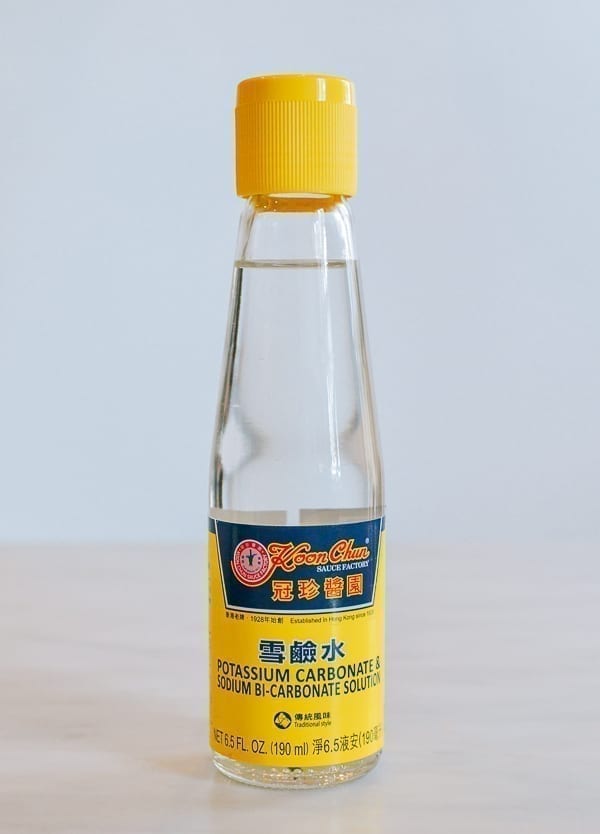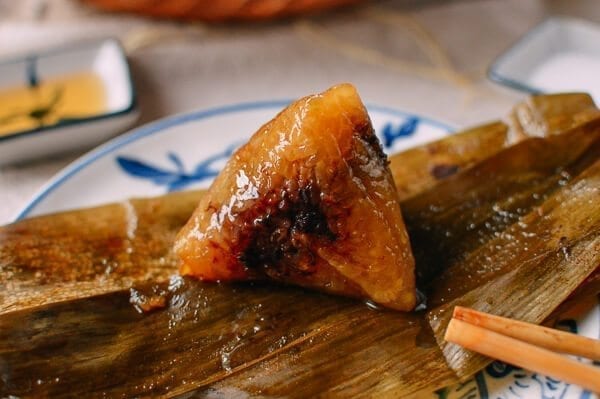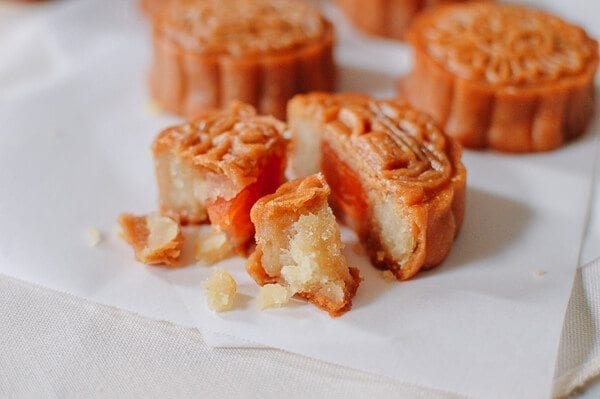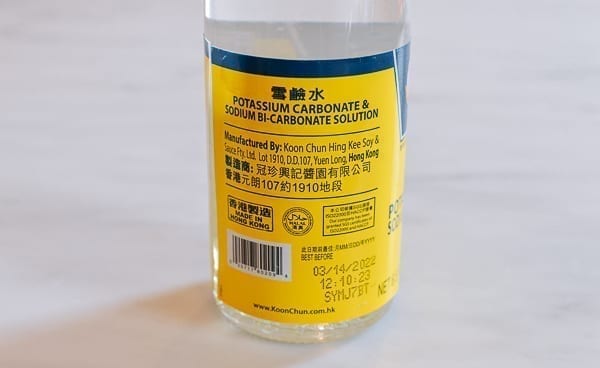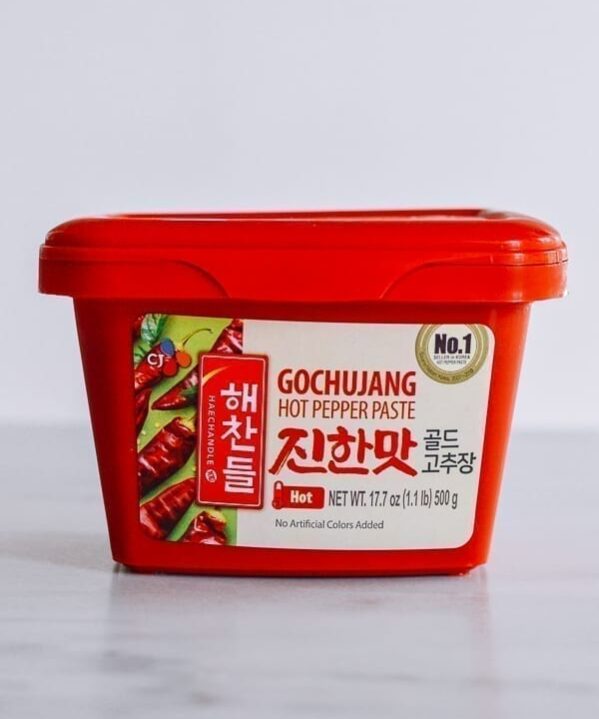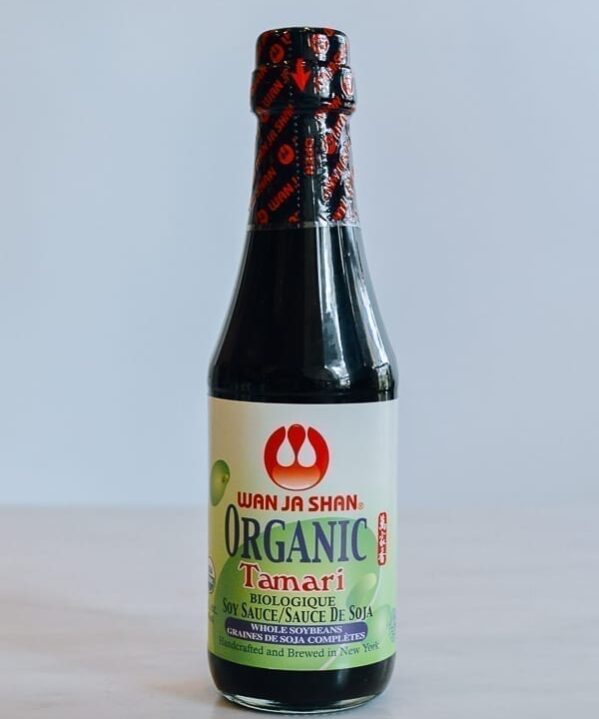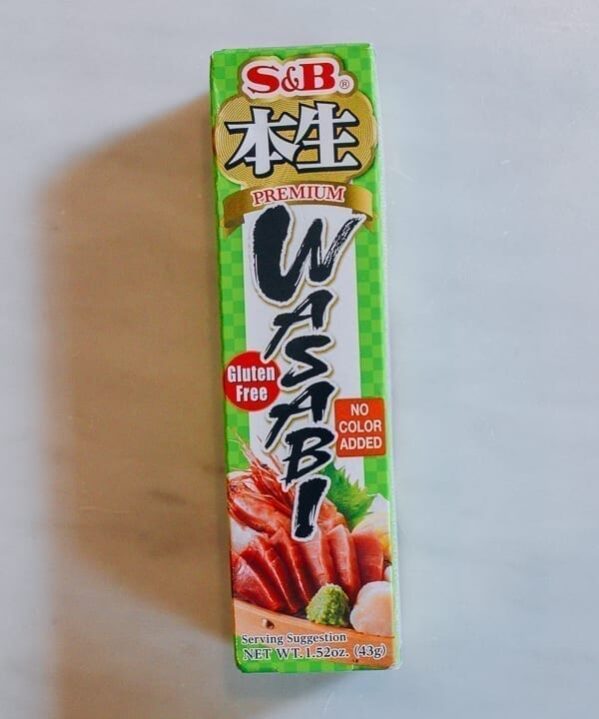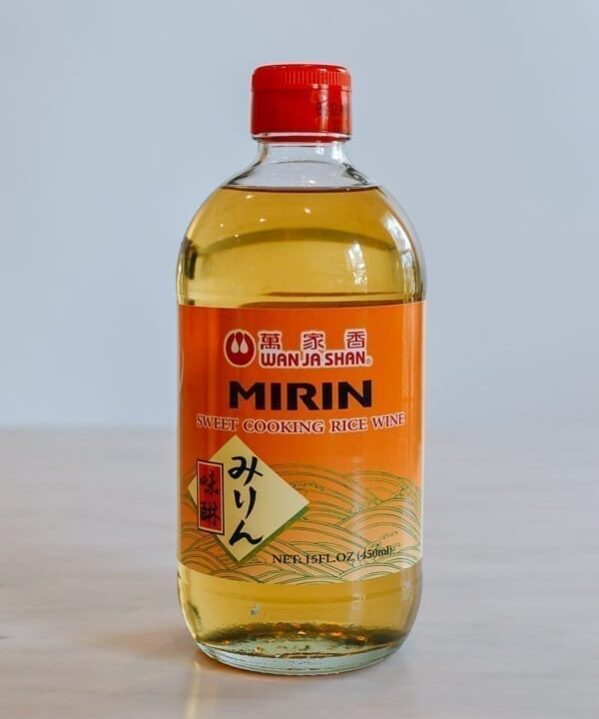Potassium Carbonate? Doesn’t sound like a food ingredient we’d normally feature in our glossary, does it?
When talking about the uses of this compound, Wikipedia says its main application is in the production of soap and glass. While that doesn’t exactly sound like something you’d want to put in your food, potassium carbonate does have some key food uses in a myriad of other Asian foods (and, for familiarity’s sake, Dutch-processed cocoa powder!).
In this quick article, we’ll talk about what it is, how it’s used, and why it’s needed in a few key recipes.
What Is Potassium Carbonate?
Potassium Carbonate, or K2CO3, is a compound that looks like powdery white salt. It is soluble in water, and sold as a solution in Chinese markets for most cooking applications. This solution is known as jiǎn shuǐ (碱水) in Mandarin, and gansui in Cantonese. In English, it is sometimes translated as “lye water” or “alkaline solution.”
How Is It Used?
This potassium carbonate solution is an alkaline liquid used to raise the pH of dough for noodles, you tiao (fried Chinese crullers), and some breads. It is also used as in jian shui zongzi, or alkaline rice dumplings, and can be added to mooncakes to help them develop a rich, amber color during baking (you only need a teaspoon for an entire batch to achieve this).
Potassium carbonate changes pH and flavor not unlike baking soda does in other recipes. (Anyone who’s boiled pretzels in a solution of water and baking soda and tasted the distinctive flavor of a pretzel has experienced this!)
In Japan, chefs add potassium carbonate to ramen noodles to give them their signature flavor, chewy texture, and yellow color. In European baking, bakers add it to bagels, pretzels, and gingerbread recipes, and in North America, cooks once used it to leaven quick breads before the advent of baking powder.
It can also balance the pH of cocoa powder (to reduce the natural acidity of cocoa beans). “Dutch processed” cocoa powder actually refers to cocoa powder with added potassium carbonate.
Buying & Storing
For Chinese recipes, potassium carbonate is usually used in liquid form. The solution of potassium carbonate dissolved in water is readily available at Chinese grocery stores. The solution can also include baking soda (sodium bicarbonate).
Once opened, store in its sealed bottle at room temperature in a cool, dark place like your pantry.
Our Favorite Dishes That Use This Ingredient:
- Jian Shui Zong (Alkaline Rice Dumplings)
- Ham and Nut Mooncakes
- Lotus Mooncakes with Salted Egg Yolks
If you have further questions about potassium carbonate or lye water, let us know in the comments. We try to answer every single one!
